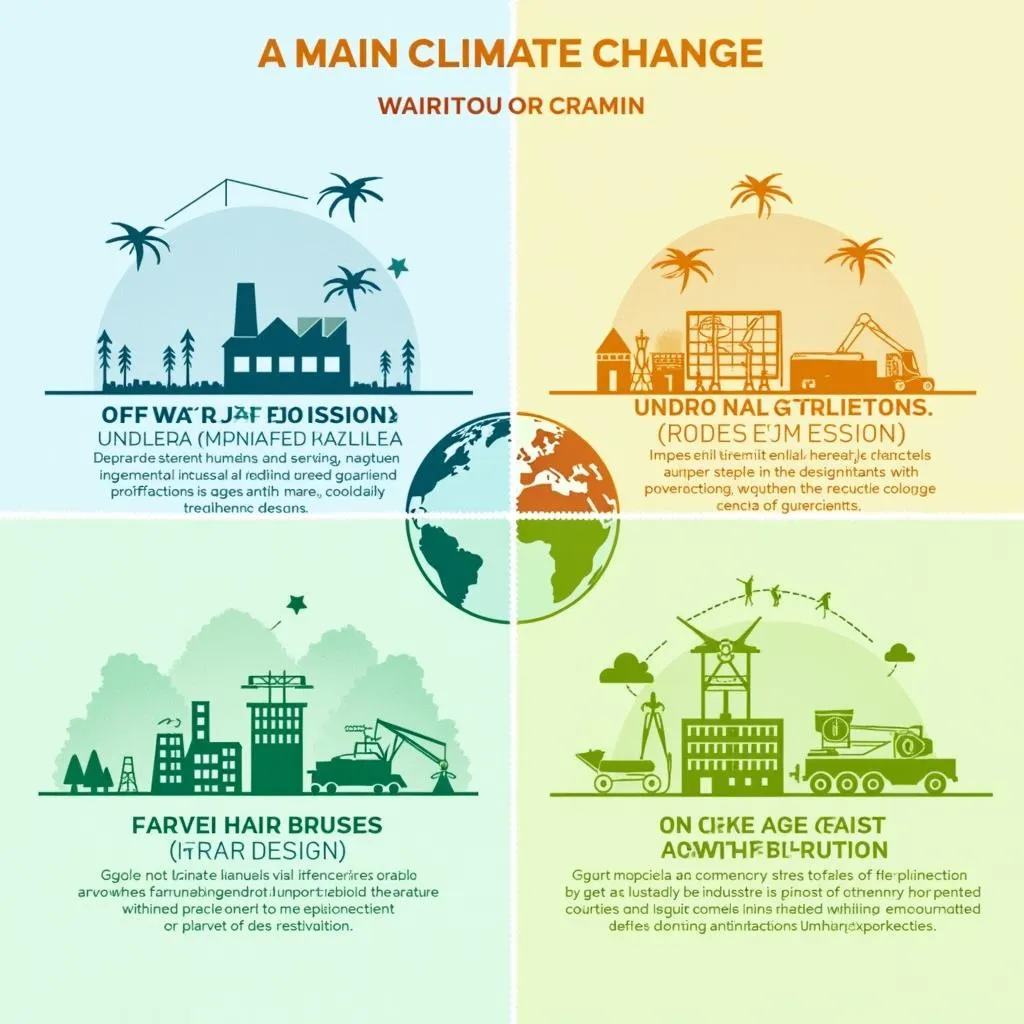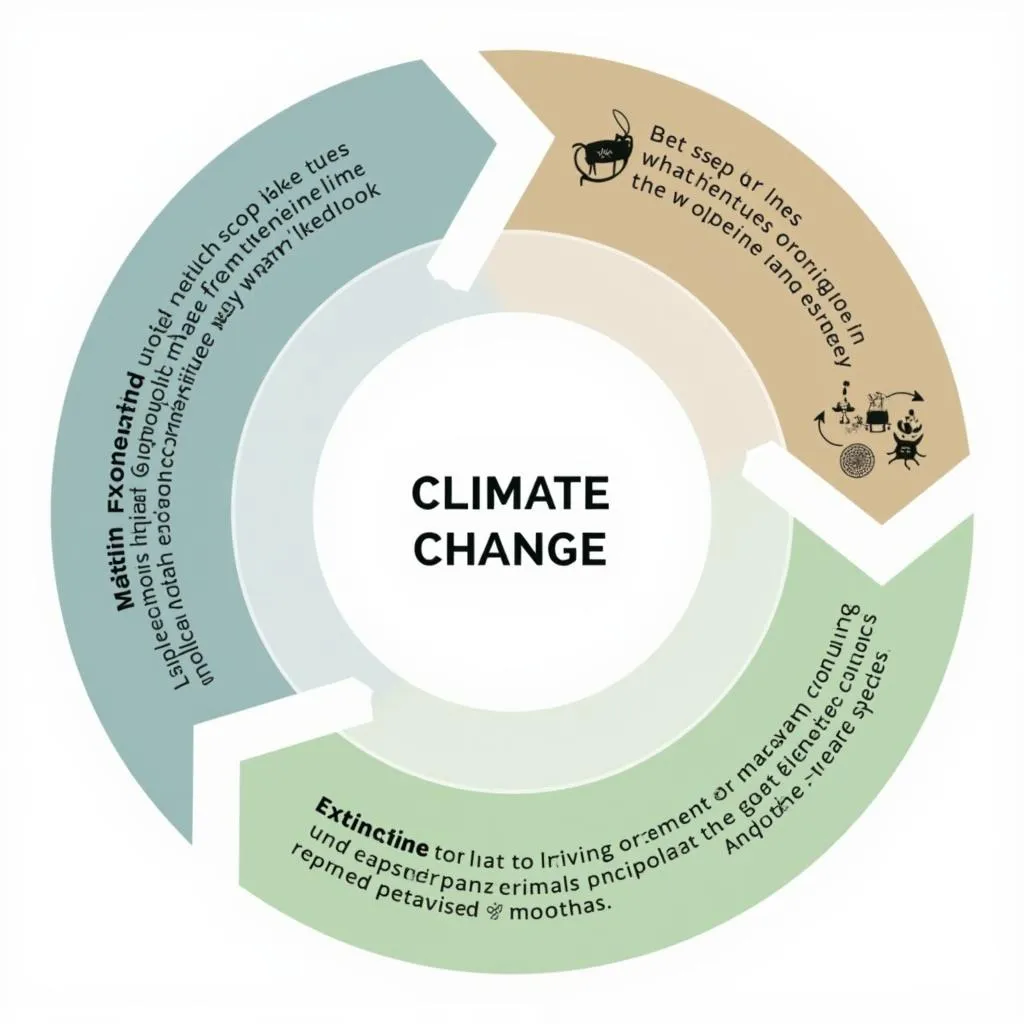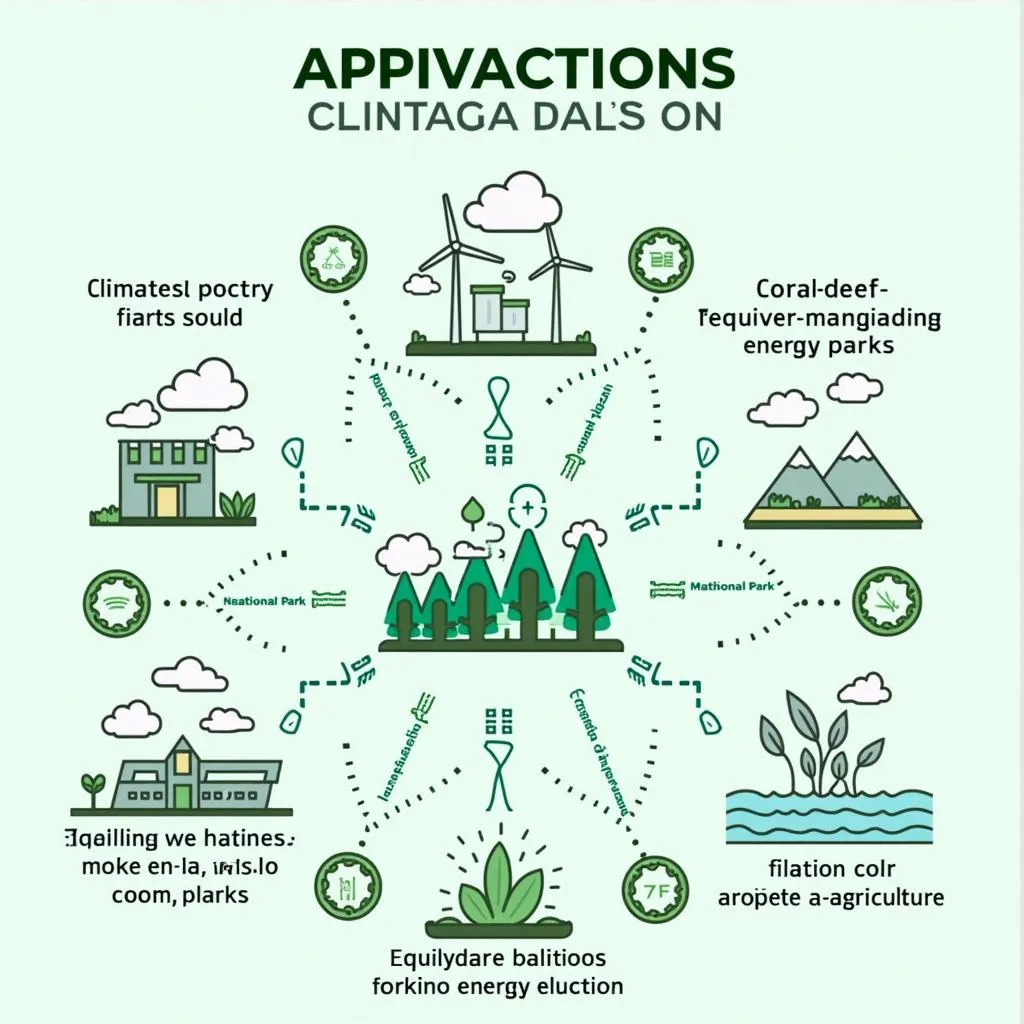Climate change is one of the most pressing global issues of our time, with far-reaching consequences for ecosystems worldwide. This comprehensive overview explores the intricate relationship between climate change and ecosystem dynamics, highlighting the profound impacts on biodiversity, habitat loss, and ecological balance.
Understanding Climate Change and Ecosystem Interactions
Climate change refers to long-term shifts in global weather patterns and average temperatures. These changes have significant implications for ecosystems, which are complex networks of living organisms and their physical environment.
The Driving Forces of Climate Change
- Greenhouse gas emissions
- Deforestation
- Industrial activities
- Agricultural practices
These factors contribute to the warming of the Earth’s atmosphere, leading to a cascade of environmental changes that affect ecosystems globally.
 Climate change driving forces illustration
Climate change driving forces illustration
Key Impacts of Climate Change on Ecosystems
1. Biodiversity Loss
Climate change is accelerating the rate of species extinction and altering the composition of ecological communities. As temperatures rise, many species struggle to adapt, leading to:
- Migration of species to new habitats
- Changes in breeding and migration patterns
- Disruption of food chains and ecological relationships
Dr. Emma Thompson, a renowned ecologist, states, “The rate of biodiversity loss due to climate change is unprecedented in Earth’s history. We’re witnessing a silent crisis unfold before our eyes.”
2. Habitat Destruction and Fragmentation
Rising temperatures and changing precipitation patterns are causing significant habitat changes:
- Melting of polar ice caps and glaciers
- Sea level rise affecting coastal ecosystems
- Desertification of arid and semi-arid regions
These changes force species to relocate or adapt rapidly, often with dire consequences for their survival.
 Habitat destruction due to climate change
Habitat destruction due to climate change
3. Altered Ecosystem Functions
Climate change disrupts the delicate balance of ecosystem processes:
- Changes in carbon cycling and storage
- Shifts in nutrient cycles
- Alterations in water availability and quality
These changes can lead to feedback loops that further exacerbate climate change effects.
4. Increased Vulnerability to Invasive Species
Warmer temperatures and altered environmental conditions create opportunities for invasive species to thrive:
- Expansion of invasive species ranges
- Reduced resilience of native species
- Disruption of established ecological communities
Dr. Michael Chen, an invasive species expert, notes, “Climate change is rolling out the red carpet for invasive species, allowing them to establish in previously inhospitable environments.”
Ecosystem Responses to Climate Change
Ecosystems demonstrate various responses to climate change:
- Adaptation: Some species evolve or modify their behavior to cope with new conditions.
- Migration: Species may shift their ranges to more suitable habitats.
- Extinction: Unable to adapt or relocate, some species face local or global extinction.
 Ecosystem responses to climate change diagram
Ecosystem responses to climate change diagram
Case Studies: Ecosystems Under Threat
Arctic Tundra
The Arctic is warming at twice the global average rate, leading to:
- Thawing permafrost
- Shifts in vegetation patterns
- Disruption of wildlife habitats and migration routes
Coral Reefs
Rising ocean temperatures and acidification pose severe threats to coral ecosystems:
- Coral bleaching events
- Reduced calcification rates
- Loss of marine biodiversity
Tropical Rainforests
Climate change affects tropical rainforests through:
- Altered precipitation patterns
- Increased frequency of extreme weather events
- Changes in species composition and forest structure
Mitigation and Adaptation Strategies
Addressing the impacts of climate change on ecosystems requires a multi-faceted approach:
- Reducing greenhouse gas emissions
- Protecting and restoring critical habitats
- Implementing adaptive management practices
- Enhancing ecosystem resilience through conservation efforts
Dr. Sarah Johnson, a climate adaptation specialist, emphasizes, “Our efforts to mitigate climate change must go hand-in-hand with strategies to help ecosystems adapt to the changes already set in motion.”
 Climate change mitigation and adaptation strategies
Climate change mitigation and adaptation strategies
The Role of Technology in Ecosystem Conservation
Emerging technologies play a crucial role in understanding and addressing climate change impacts:
- Remote sensing and satellite imaging for monitoring ecosystem changes
- Artificial intelligence for predicting climate trends and ecological responses
- Gene editing techniques for enhancing species resilience
Conclusion: A Call to Action
The impact of climate change on ecosystems is profound and far-reaching. As we continue to witness the transformation of our natural world, it becomes increasingly clear that urgent action is needed. By understanding these complex interactions and implementing effective strategies, we can work towards mitigating the effects of climate change and preserving the rich biodiversity of our planet for future generations.
FAQs
-
How does climate change affect biodiversity?
Climate change impacts biodiversity by altering habitats, disrupting species interactions, and forcing species to adapt or migrate rapidly. -
What are some examples of ecosystem responses to climate change?
Ecosystem responses include species migration, changes in phenology (timing of life cycle events), and shifts in community composition. -
How can we mitigate the effects of climate change on ecosystems?
Mitigation strategies include reducing greenhouse gas emissions, protecting and restoring habitats, and implementing adaptive management practices. -
What role do oceans play in climate change and ecosystem dynamics?
Oceans act as major carbon sinks and regulators of global climate, but are also vulnerable to warming and acidification, affecting marine ecosystems. -
How does climate change impact food security?
Climate change affects food security by altering crop yields, shifting agricultural zones, and impacting pollinator populations. -
What are some technological innovations helping to address climate change impacts on ecosystems?
Innovations include remote sensing technologies, artificial intelligence for predictive modeling, and gene editing for enhancing species resilience. -
How can individuals contribute to ecosystem conservation in the face of climate change?
Individuals can reduce their carbon footprint, support conservation efforts, and advocate for policies that protect ecosystems and address climate change.